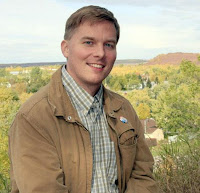Minnesota’s true past becomes clearer in ‘Land of the Dakota’
By Aaron J. Brown“Human beings have recorded their relationships with places in innumerable ways throughout their existence. They have given descriptive names to special features of the landscape, gathered in powerful areas, and marked their experiences on land … places tell us stories and provide us with long-lasting memories. It is through stories and experiences that we understand the power of place.” From “Mni Sota Makoce: The Land of the Dakota
” (p. 222)So it has always been. As an amateur historian my first look back was to my own people, the immigrants who came to northern Minnesota for the iron mines. Bad conditions and political unrest in Europe combined with opportunities across the Atlantic to bring my family to the place we call Minnesota.
But in looking back one quickly finds there many fascinating stories get short shrift in high school history lectures. Others were simply never told to people like me in school.
“Mni Sota Makoce: The Land of the Dakota
” is a new book from the Minnesota Historical Society Press. Authors Gwen Westerman and Bruce White, along with a number of contributors, introduce Minnesota in its original tongue, showing us the people and the land before the first French explorers and traders arrived in the 18th Century.
Read the complete review and web extras …
The thesis of the book is simple and driven hard: the Dakota have lived on the land we now call Minnesota for 10,000 years – forever, according to their oral histories, and certainly as far back as anthropological records show. The Ojibwe, the people to whom most white Iron Rangers are introduced as the region’s natives, came much later, only after Europeans arrived in North America and pushed American Indians west. And while I knew this, the book clarifies it in ways I hadn’t considered.For instance, central to the Dakota origin story is the idea the people emerged from the ground at the mouth of the Minnesota River, in a place now located remarkably close to the Minneapolis-St. Paul Airport and Mall of America. The roads they walked in all directions are the roads people use today.
The first half of “Mni Sota Makoce” describes the Dakota way of life as it existed before white settlement was a remote consideration. And when you think about it, that wasn’t so long ago. When “founding fathers” were signing the U.S. Constitution, Mni Sota Makoce was still firmly the Land of the Dakota, with only the beginning of Ojibwe encroachment in the Arrowhead region. Reading through the Dakota place names of the time, one quickly realizes that our modern state bears elements of the Dakota language to this day, even if few speak it fluently.
For me, the book shone brightest when we learn how the Dakota lived before outside influence. The people moved with the land and its seasons in ways later European settlers, and their concept of permanent cities, would resist. Summers were spent in places where there was food and shade. Winters were spent in places where people could stay warm and fed. For all the so-called progress of the last two centuries, the brass ring even in our time is a good summer place to augment that warm house on the plow route in town.
For those still recovering from the long, cold “spring” here in northern Minnesota, you might find the Dakota method of calculating seasons to be more appropriate than the Julian calendar. “Mni Sota Makoce” explains that Dakota view the year in five-month winters and summers, with only a month allocated for spring and fall. Even with this more accurate way of marking Minnesota seasons, one of the most popular annual debates among Dakota people was whether spring was really here yet or not.
Bob Dylan said that in the North Country, “the wind blows heavy on the borderline.” In reading “Mni Sota Makoce” we’re reminded that our part of Minnesota has always been a borderline. The Upper Mississippi River, Laurentian Divide and other landmarks have been logical boundaries between European powers, the Dakota, Ojibwe and Cree.
Living here in the forests of northern Minnesota, my habits and attitudes sync increasingly close to our meaningful seasons and the stories that connect generations. I may not be Dakota, but “” showed me the importance of knowing the full story of this land I’ve come to love.
Aaron J. Brown is an author and community college instructor on northern Minnesota’s Iron Range. He writes the blog MinnesotaBrown.com and hosts 91.7 KAXE’s Great Northern Radio Show on public stations.
WEB NOTES: As you can read, I heartily recommend this book, especially if the Dakota story in Minnesota is a blind spot as it was for me. I’d like to know more about how the Dakota, Ojibwe and other peoples related and lived before the political boundaries of European settlers came. I often struggled to connect people and their stories to specific land masses, landmarks and interactions.
For instance, I was fascinated to read in this book the elaborate ceremony involved in Dakota/Ojibwe relations, showing how they were used to both fighting and making peace. We learn some about many Dakota and Ojibwe who lived among their people with mixed ancestry and loyalties. I find those sorts of things very interesting. As is true of most any history book, this one only serves to send you out looking for more.


